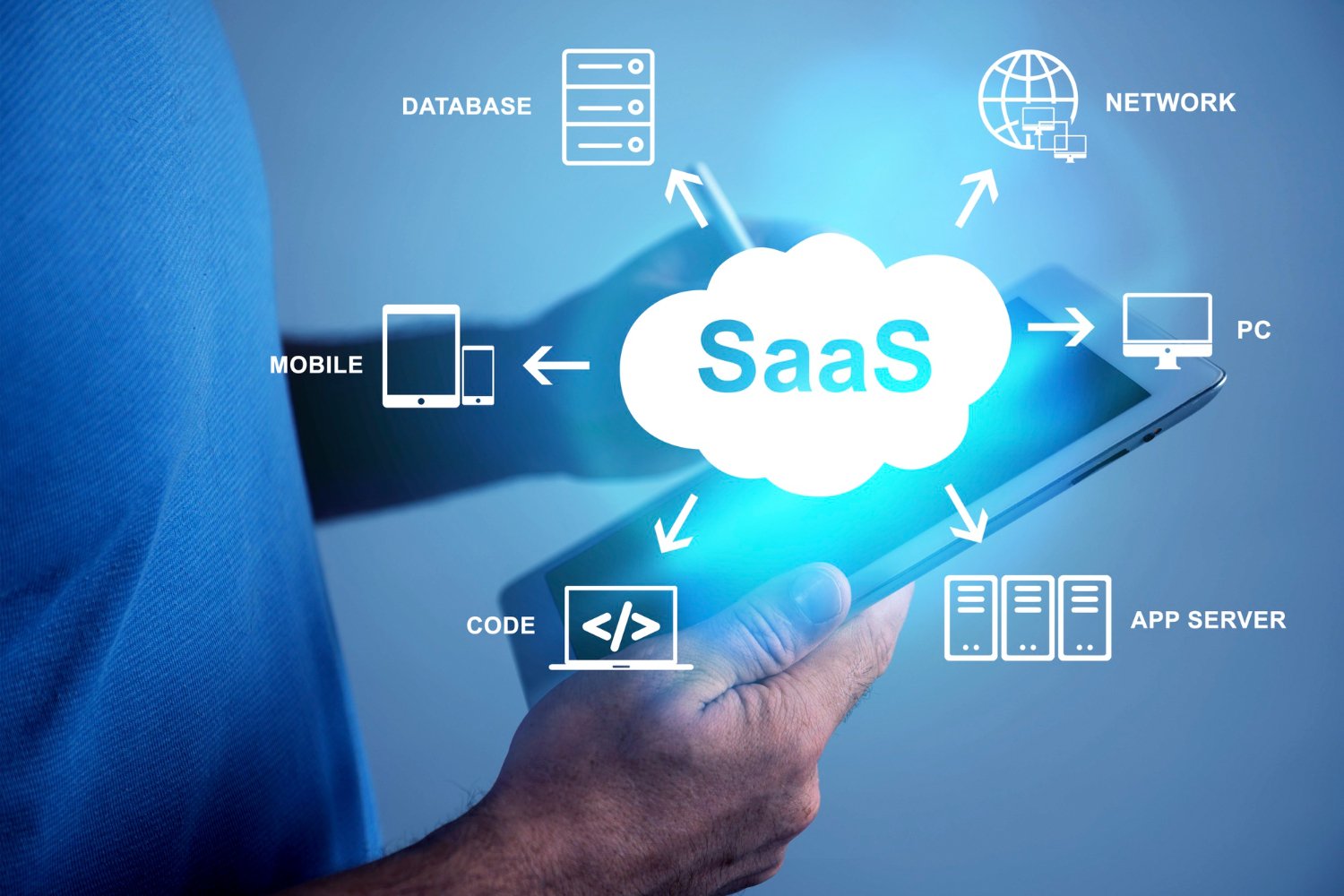SaaS ERP is an enterprise resource planning (ERP) software application that runs in the ERP vendor’s data center, rather than on the purchasing organization’s servers and infrastructure (known as on-premises ERP), allowing the company’s clients to access the product over the internet. The term ‘Software as a Service (SaaS) was first coined by the Gartner Group when they declared in 2002 that software-as-a-service would become the predominant delivery model for application software. SaaS is a form of application software, which runs on an Internet platform that is paid for on a subscription basis. This can be described as any time when consumers pay on a recurring basis for access to a company’s website. The idea is that companies like Facebook and Google are perpetual free trials. All you have to do is sign up to use their service and then they prompt you to start paying your subscription fee afterward.
SaaS ERP is a subscription-based service that’s available over the internet, and it represents one of the fastest-growing industries on the planet. The concept of SaaS developed before the rise of cloud computing. In the early days of the internet, following the arrival in 1993 of the first graphical user interface (which made the world wide web access to the general public), a small group called themselves application service providers (ASPs).
Advantages of Saas ERP
SaaS (software as a service) also known as on-demand applications, is an increasingly popular way to use business software. SaaS (Software as a Service) is software that is delivered over the internet and licensed on a pay-as-you-go basis. SaaS encompasses cloud computing, which offers remote access to data storage and other services through websites, mobile apps, and desktop software.
SaaS ERP provides more than 100% of the functionality that users need to manage a business, which makes it an ideal platform for businesses looking to streamline their operations. It’s also easy to implement, relatively low cost, and offers excellent scalability
Disadvantages Of Saas ERP
While SaaS ERP may have several advantages to deploying an on-premise ERP solution, namely the lower cost of acquisition, licensing costs, and switching costs; there are also disadvantages an organization should be aware of before making the decision to pursue this solution.
Despite the fact that SaaS ERP provides many distinct advantages, it may not be right for every business, particularly if an organization needs to follow stringent security rules or has a very large number of employees or customers.
SaaS ERP cost
Time is money and every second counts, so almost all of us do everything in our power to speed up the business process.
- In this way, business productivity rises, more revenue is generated and all-around efficiency grows. This is why many companies are switching from traditional, old-school software to cloud-based enterprise resource planning software (SaaS ERP). SaaS ERP offers the best of both world
- SaaS ERP is a subscription-based service and the ERP vendors will bill the customers on monthly basis or annually or quarterly.
- Many SaaS ERP vendors have tiered pricing based on the company size while others offer a subscription-based pricing
- A large IT team is not required to manage the software
- Many SaaS ERP vendors charge per user, while others have tiered pricing based on company size.
SaaS Implementation
SaaS ERP is a software suite that is hosted by a third-party vendor or cloud partner. It can be deployed in hours or days. The vendor or cloud partner manages the IT infrastructure. Users can access the software from a desktop web browser or smartphone app. The implementation of SaaS ERP can be slowed by the need to migrate data from an old ERP system. Users also need time to get used to new ways of executing business processes and interacting with the software. However, integration with other SaaS applications or on-premises software for manufacturing and warehouse management is typically not a hassle. SaaS ERP is generally easier to use than most on-premises ERP systems. While it does bring its own learning curve, organizations must invest resources in training and change management when implementing SaaS ERP too.
SaaS ERP and Digital Transformations
Since ERP software is the central source of information for an entire organization, it’s often the system corporations look to upgrade first. Going with SaaS ERP is logical for any business looking to capitalize on technology advancements, become more efficient, improve customer experiences and retire outdated on-premises systems.
A software-as-a-service ERP system allows businesses to stay on the cutting edge and on par with competitors because all customers are always on the latest version. It also opens the door to integrate with a vast array of other cloud solutions, including CRM and HRMS. This is where the power of cloud computing really shows its magic: It puts all these insights at one place, and everyone can access the data.
Future Of SaaS ERP
To some degree, anyway—customers aren’t looking for miracles from future updates. It is clear that the future of ERP software in the cloud will continue to change and evolve, driven by the needs of companies as well as independent software vendors. However, it is equally clear that the cloud removes many hurdles to adoption, and features that were previously available only on-premises are making their way into the cloud.
